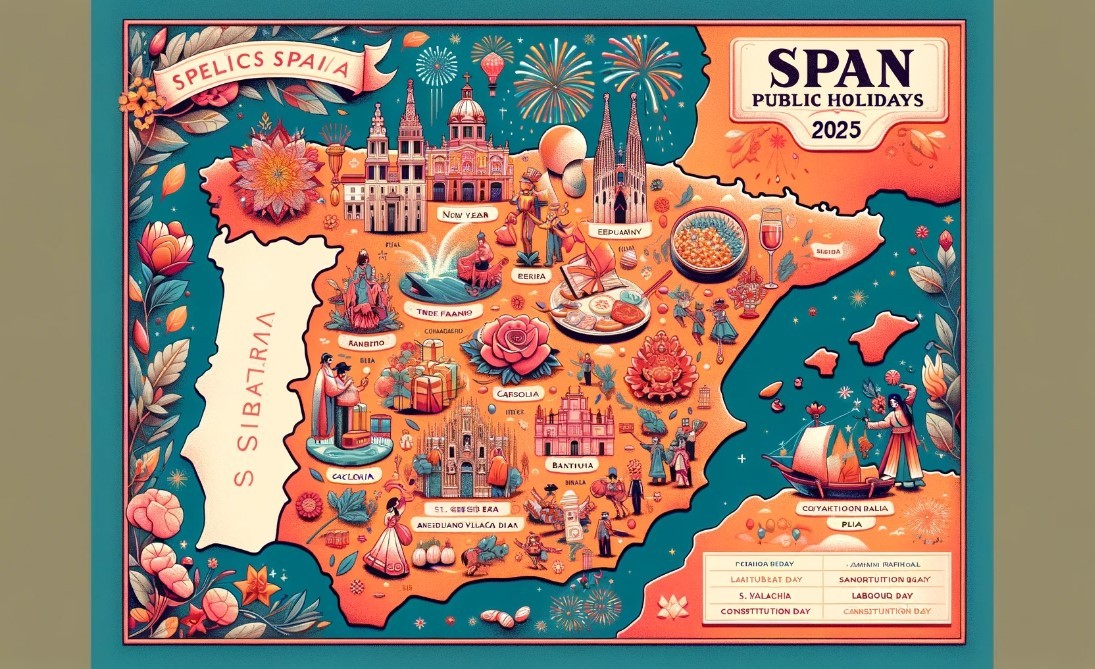What Is The Capital of Spain: History, Facts, Best Places to See
 |
| What Is The Capital of Spain: History, Facts, Best Places to See. Photo: knowinsiders. |
What is the Capital of Spain?
How much do you know about Spain's capital? Madrid is one of Europe’s most historically rich cities. With its tentacles spreading in every sphere of European politics, education, entertainment, environment, media, fashion, science, culture, and the arts; the city of Madrid is a big tourists' magnet.
Let’s start with the basics, including history, best places to go and frequently asked questions and facts about the capital of Spain.
*****
History of Madrid
According to esmadrid.com, Magerit, ‘land rich in water’. This is how the Arabs called this area on the central plain of the Iberian Peninsula, close to Sierra de Guadarrama, where King Phillip II of Spain later established the royal court. Later on, it grew into the big city that’s come down to us.
The first historical record of Madrid dates back to the year 865, when Emir Muhammad I commissioned the construction of a fortress in the village of Mayrit, on the banks of the river Manzanares. ‘Mayrit’ means ‘plenty of waterways’, which is why the city’s first recorded coat of arms read, ‘I was built on water / My walls are made of fire / This is my flag and my coat of arms’. Madrid belonged to the Islamic world until 1083, when Alfonso VI of Castile took over the city.
Few vestiges have remained from this era. On Calle Mayor, next to the Institute of Italian Culture, there used to stand the Grand Mosque and, most probably, as in every Muslim city, the souk. On the site of the former mosque rose the Church of Santa María, of which some remains can still be seen. Close by, on Cuesta de la Vega, there’re parts of the old town walls that enclosed the medina or citadel. It was inside these walls that the Christians found a statuette of Virgin Mary with a candle that had been burning for over four hundred years at the time they seized the area. Almudena, derived from the Arabic al-mudayna that translates as ‘the little city’ or ‘citadel’, has been, since then, the name mostly used by Madrileños to refer to the Virgin.
| Madrid is the capital and largest city of Spain. Located on the Manzanares River in the center of Spain, it is bordered by the autonomous communities of Castile and Leon and Castile-La Mancha. In 2014, Madrid has an estimated population of 3.3 million, which makes it the third largest city in the European Union behind London and Berlin. Madrid has an estimated population of 3.3 million, but the population of the Madrid metropolitan area is estimated to be about 6.5 million. This is the third-largest metropolitan area in the European Union behind London and Paris. Madrid has 40 surrounding municipalities that create the Madrid metropolitan area with a total area of 5,335.97 square kilometres (2,060.23 square miles). There are two zones of urbanization: an inner ring and outer ring. The largest suburbs are in the South along the roads out of Madrid. The city has a population density of 5,400 people per square kilometer, or 14,000 per square mile. |
As introducingmadrid.com reported, Madrid did not become an influential city until Philip II of Spain transferred the capital from Toledo to Madrid in 1561. When the Court had been moved, it became patent that urban reforms were needed and soon suburbs grew outside its Medieval walls which changed the history of the city.
The number of inhabitants grew from 4,060 in 1530 to 37,500 in 1594. In April 1637, there were 1,300 “legitimate poor and disabled” people and 3,300 beggars in the Courts. Most of them were foreigners, former soldiers and pilgrims from Santiago de Compostela in Galicia. These made up, along with, the swindlers and ruffians, the bottom of Madrid’s social pyramid. The population’s discontent due to bread shortages and inflation was exploited by certain parties to encourage riots, for example, "The Riots of the Cats" in Madrid.
The royal court attracted many Spanish and foreign artists and the city became the artistic and literary hub in Spain. The most impressive buildings of Madrid de los Austrias (the name used for the old city centre), include the Plaza Mayor, the Town Hall, certain churches and the court jail.
During the eighteenth century, Madrid took part in the War of the Spanish Succession, caused by the death of Charles II, who died without an heir. The empire was sought after by the royal houses of Austria (Habsburg), France (Bourbon) and Bavaria (Wittelsbach). Madrid had supported the Bourbon family since 1706 and when Louis XIV of France (House of Bourbon) finally sent his grandson to Madrid to become King Philip V of Spain, so the country was led by a member of the House of Bourbon.
As a way of thanking Madrid for its support, Philip V commissioned new palaces and buildings, including the Bridge of Toledo, and the Royal Palace of Madrid (1737), which was built to replace the Royal Alcazar, burnt down in 1734. Ferdinand VI of Spain and especially Charles III put great efforts to modernize the city, for example, by cleaning the streets, installing stone pavements, introducing streetlights and employing people to survey the streets at night, among many other interesting measures. Charles IV continued with these reforms, but on a smaller scale.
The efforts made by the Bourbons to transform Madrid into a modern and developed city were interrupted by the Napoleonic Wars. The city didn’t fully recover until the 1830’s.
 |
| What Is The Capital of Spain: History, Facts, Best Places to See. Photo: departurestravel.com |
Between 1840 and 1850, many old convents and church-owned estates that had been bought by traders, landowners, liberal workers and financiers due to the Desamortización Eclesiástica of Mendizábal in 1836 (Mendizábal's confiscation of church-owned property) were demolished and new neighbourhoods were established. However, Madrid was practically the same size it had been during the Habsburg period.
By the 20th century, Madrid became the largest GDP city in Spain and third in Western Europe. The city boasts modern infrastructure yet the feel of many historic neighborhoods. Like many European cities, Madrid watched its population drop from the 1970s through the 1990s as people spread to the suburbs, but the city began surging again in the 1990s, as worldpopulationreview reported.
Best Places to See in Madrid
From the lavish facades of the royal palaces to the lush, tranquil gardens dotted throughout the city, Madrid is a fascinating, cultural destination in Spain. With a seemingly endless amount of attractions and activities, something is happening in around every corner, and in every plaza around the city.
Today, Madrid is an important economic, cultural, industrial, educational, and technological hub on the European continent. It is also one of the most visited cities in the world. You wouldn't want to miss some of the festivals held in this city if you are touring Europe.
A trip to the capital wouldn't be complete without seeing the following attractions:
Gran Vía
The main tourist and shopping artery in the centre of the capital starts at C/Alcalá and runs 1.3 kilometres to its end at Plaza de España. Throughout over 100 years, Gran Vía has had various names depending on the incumbent government. During the Spanish Civil War it was popularly referred to as the Avenue of Mortars because of the shells that ended up on the pavements and buildings. In 1981, during the Spanish Transition, the iconic street was dubbed Gran Vía. Throughout its long history, Gran Vía has been home to Madrid’s first department stores and some of the best best entertainment spots in the city, as Timeout reported.
Plaza Mayor
Why it’s awesome: During your trip to Madrid, you’ll inedibly visit the bustling, main square of Plaza Mayor. And while it’s now a lively place to visit, Plaza Mayor’s history has a dark and complicated past hosting a variety of bullfights and even executions. But don’t let its past influence your judgment! Plaza Mayor is now one of the most popular places to visit, whether you’re coming to watch one of the street performers, dine at an outdoor cafe, or simply relaxing and watching people go about their day.
What to do there: According to thebrokebackpacker.com, Plaza Mayor is one of the cultural centers of Spanish life, which means there is always something happening day and night. During the day, you’ll find locals and tourists admiring the art vendors or enjoying the variety of live entertainment. At night, the square remains a popular destination for happy hour enthusiasts and diners. And due to its central location, there are also plenty of bars and nightclubs keeping visitors entertain long into the night.
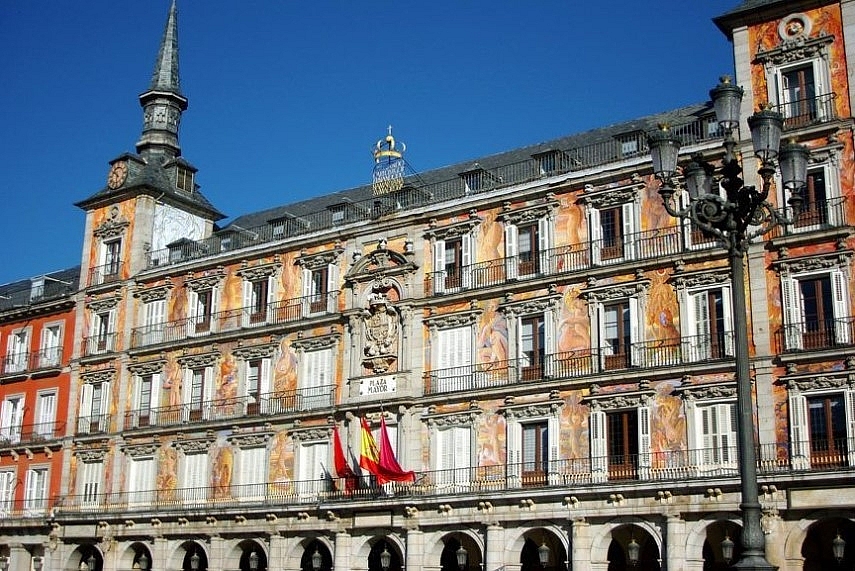 |
| Photo: thebrokebackpacker.com. |
Prado Museum
A truly world-class museum, the Prado Museum has a collection of more than 8,000 paintings and 700 sculptures. Among its extensive assortment of artworks are many masterpieces, including celebrated paintings that rival the most famous works of the Louvre Museum in Paris.
As planetware.com reported, the Prado Museum displays around 2,300 pieces of the collection in more than 100 rooms on three floors. Trying to see it all in one visit can be daunting, but it's possible to focus on a specific itinerary of masterpieces. The Prado suggests "routes" (self-guided tours) of specific works.
Spanish paintings from the 12th century to the early 19th century form the majority of the collection. The assortment of paintings by Francisco de Goya comprises a remarkable 140 works. Also not-to-be-missed is Las Meninas, a depiction of the Spanish royal family of Felipe IV created by Velázquez in 1656. Other must-see works in the Spanish Painting collection include The Annunciation by El Greco, Jacob's Dream by José de Ribera, The Third of May by Goya, and The Immaculate Conception by Murillo.
Part of the Prado Museum's exhibition space includes a contemporary building and the renovated 16th-century cloister of the San Jerónimo el Real monastery. These galleries display a noteworthy collection of 17th-century Spanish religious paintings.
Tourists will also appreciate the museum's gift shop and the café with a pleasant outdoor terrace.
Get the most out of your time at the Prado by joining a Skip the Line: Prado Museum Tour in Madrid, avoiding the long lines and going directly to the most interesting galleries. On the 90-minute tour, your official museum guide provides an overview of the museum's must-see masterpieces, while providing historical context to help you understand the artworks.
Address: Paseo del Prado, Madrid
Palacio Real
The massive size of the Palacio Real is its most imposing feature. Madrid’s Royal Palace boasts more than 2,500 ornately decorated rooms. Built in 1764, the palace served as the royal residence beginning with Carlos III. The last royals to reside there were Alfonso XIII and Victoria Eugenie in the early 1900s.
According to touropia.com, although the palace is still used for official ceremonies, 50 of the structure’s elegant rooms are open to the public, including an armory, pharmacy and the palace’s lavish throne room, or “Salón del Trono,” which features a ceiling painted by the Baroque artist Tiepolo. A fresco in the grand dining hall depicts Christopher Columbus presenting gifts from the New World to King Ferdinand and Queen Isabella.
 |
| Photo: touropia.com |
The Golden Triangle
Comprised if not one, or two, but three world-famous art galleries, the Golden Triangle is sure to delight every type of art lover. Each museum is located close by each other, which means you can easily spend an entire day hopping between each one. They are all located on Paseo del Prado, which is right in the middle of Madrid’s city center. Besides housing some of the most prominent works from around the world, the museums in the Golden Triangle each focus on a different time period of art.
First, you have the Prado Museum, one of Madrid’s more prestigious art galleries. It houses a vast collection of classical, pre-20th century works from Goya, Bosch, El Greco, and Titian. The Reina Sofia Museum is next and contains Spain’s most extensive collection of modern art. Here, you’ll find paintings and drawings from some of the world’s most talented contemporary artists, including Picasso and Dali. Completing the trifecta is the Thyssen-Bornemisza Museum, which has artwork that doesn’t quite fit into the other two galleries. You’ll see paintings from Italian, American, German, and Dutch impressionists and expressionists from the 20th century onwards.
Temple of Debod
Madrid’s very own Egyptian temple was bestowed on the country by Egypt and moved, piece by piece, in the early 1970s. It is one of the best places to watch the sun set in Madrid.
This is the Nubian treasure of Madrid and the only Egyptian temple in Spain that is fully preserved. Brought stone by stone from Egypt and carefully reconstructed with regard to its original orientation, this monument was a gift from Egypt and UNESCO for Spain’s part in saving the Abu Simbel temples, which would have otherwise been submerged under water after the construction of the Aswan Dam. At the time of the dam’s construction, the temples comprised one of the most important pilgrimage destinations in Africa, dedicated to the gods Amón and Isis with reliefs and carvings that decorate the inside of the sanctuary. When you visit, be sure to hang around to see the sun set, a spectacular sight from where the temple stands, as Timeout reported.
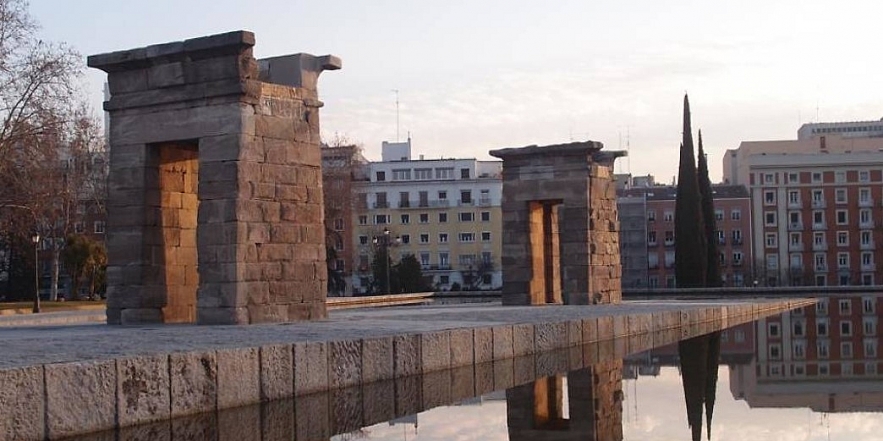 |
| Templo de Debod. Photo: timeout.com. |
Bernabeu Stadium
There’s Renaissance art and then there is sporting art. When it comes to the latter, Bernabeu Stadium offers an incredible experience. The home of Real Madrid, Europe’s most successful football team, catching a football match at the massive stadium, is on many sporting bucket lists. The stadium holds up to 85,000 people.
Bernabeu Stadium quickly sells out for El Clasico, the epic annual match with arch-rivals Barcelona. But if you aren’t able to see Los Blancos live, you can still tour the impressive stadium and visit the exceptional museum. Explore the dressing rooms, dugouts and the press area. At the museum, get up close to trophies, artifacts and fascinating exhibits.
Buen Retiro Park and the Crystal Palace
The Buen Retiro Park (Parque del Retiro) is an oasis of peace in the heart of Madrid. This lush and beautifully manicured park offers an escape from the hustle and bustle of the city. The park encompasses more than 140 hectares and is shaded by over 15,000 trees, as planetware.com reported.
Created for the Count-Duke of Olivares in the 17th century, the historic park has an elegant ambience with its lovely landscaping and tree-lined paths. During the reign of Isabella II in the 19th century, the landscaping of the park was enhanced. The Parque del Retiro was owned by the Spanish royal family until the 19th century; since then it has been a public park.
From the main entrance at the Plaza de Independencia, visitors arrive at the pool in the center of the park. From here, paths lead to the enchanting La Rosaleda (Rose Garden), the formal French Jardín de Don Cecilio, and the Andalusian-style Jardines de Cecilio Rodríguez.
Built in 1887, the Palacio de Cristal (Crystal Palace) is a splendid cast-iron and glass pavilion that houses art exhibitions. The Crystal Palace looks out onto a graceful fountain and reflecting pool. Visitors will find other interesting fountains at Buen Retiro Park including Los Galápagos (The Turtles), El Ángel Caído (The Fallen Angel), and La Alcachofa (The Artichoke).
A pleasant pastime among locals is going for a spin on a row boat at the park's tranquil lake. Other favorite things to do include taking the kids to a puppet show at the Teatro de Títeres, taking walks on the scenic tree-lined paths, and basking in the sun or relaxing in the shade at one of the park's outdoor cafés.
For stargazers, the park has an observatory that was built in 1790.
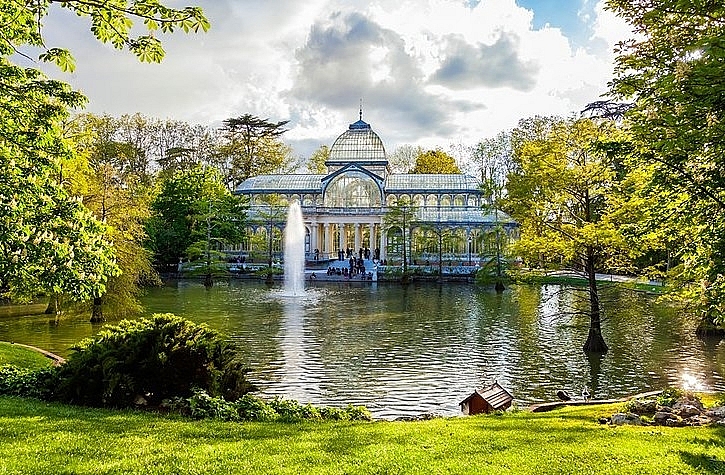 |
| Photo: planetware.com. |
Barrio de La Latina
As traveltriangle.com reported, narrow streets, spacious squares, and old Islamic walls, pretty much constitute the homely and warm environs of this neighboring street of Barrio de La Latina in Madrid. Representing the old times and the cultural heritage, this neighborhood is a must visit for everyone who’s up for delicious tapas, shopping, music & dance scenes, and beer of course! Having said that, make sure you avoid visiting La Latina during weekends unless you don’t mind the jam-packed crowd.
Mercado de San Miguel
Situated within walking distance of the Plaza Mayor, the Mercado de San Miguel is a popular shopping destination for local foods and delicacies. Its intricate cast-iron architecture features glass walls that showcase goods ranging from salted fish and oysters to fresh pasta and cakes.
Because the market stays open as late as 2 a.m. on weekends, it’s become a popular nightspot where visitors and locals gather to enjoy drinks and tapas, or appetizers. The site also plays host to events like concerts, cooking classes and private parties.
Interesting Facts about Madrid
There are many facts that everyone knows about the famous sites in this marvelous city, but there even a city as famous as Madrid has some secrets of its own! Check out the following amazing facts about Madrid that we summed up from theculturetrip, discoverwalks.com, travelinginspain.com and citylifemadrid.com.
Madrid is the third biggest city in the European Union
Right after the spectacular demographics of London, home to around 8.5 million people, and the 3.6 million inhabitants of Berlin, Madrid comes in third in terms of peaking population numbers of the European Union. In 2015, an estimate of 3.1 million people were living in the buzzing capital of Spain – virtually the entire population of Armenia! Counting in its massive metropolitan area, Madrid would also attain the bronze medal in the category ‘Greatest Metropolitan Area of the EU,’ its vast district of 5,335 square meters currently housing a baffling 6.2 million people.
Madrid is the sunniest city in Europe
Can you believe that Madrid is actually the best place to lay out in the sun for a nice tan, compared to the many beaches of Europe? With an average sunshine rate of around 250 days per year, this Spanish metropolis hardly sees the clouds. If you’re one of those people who’s easily affected by the weather, Madrid is your ideal home. Naturally, this means that the heat can get pretty brutal, but summers are usually fair until August. During the hot months, you definitely need a fan. And every month, be sure to wear sunscreen.
The King Doesn’t Live in the Palace
The Grand Royal Palace in Madrid is an incredible sight that is available to visit. The palace contains 3,418 rooms and has approximately 135,000 square meters of floor space. It is commonly used for state ceremonies and official meetings. However, the king of Spain, Felipe VI, does not actually reside in this awe-inspiring palace. The royal family has been residing in the Palace of Zarzuela since 1962, which is located just outside of Madrid and far more modest than the grand Royal Palace. The Royal Palace is still the official royal residence.
Madrid is not only a city, but a ‘state’
Often escaping notice is the fact that ‘Madrid’ is not only the name of the world-famous capital, but also one of the 17 autonomous communities of Spain. Once, these prestigious provinces were established to divide the Spanish territory into its proud historical regions in order to facilitate a centralized government. Having no true administrative power when they were classified in 1833, the communities today can be seen as politically autonomous provinces or federal states of Spain.
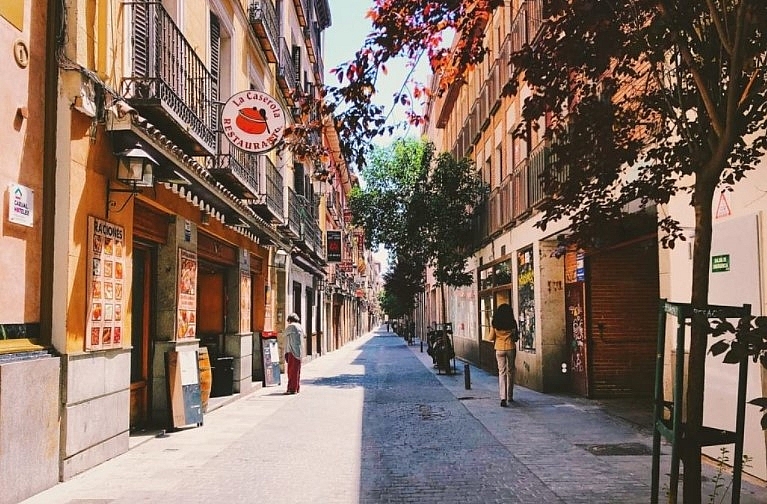 |
| Photo: travelinginspain.com. |
The World’s Oldest Restaurant
Sobrino de Botín was founded in 1725 and is known to be the oldest restaurant in the world. The restaurant uses a fire oven and apparently, the fire has never been extinguished since the day it opened in 1725. Sobrino de Botín is known for their Cochinillo Asado, which is roasted suckling pig. They still use their traditional recipes, but they have been perfected over the years.
Madrid is the birthplace of multiple celebrities
You know that a city is a great place to live when famous people grew up there. Among other stars, Madrid gave birth to celebs like Penelope Cruz, the well-known actress and Oscar winner, and the pop singer, Enrique Iglesias. Of course, Madrid is not only a nice place to grow up, it’s actually a lovely city to spend your adult life. That’s why celebrities like Christiano Ronaldo live there with their families.
Above All the Rest
Most people don’t consider Madrid when thinking of cities perched up among the clouds, But they should! Madrid lies at the highest altitude of any capital in Europe at 667 metres/2,188 ft!
Devil in the Park
The Retiro Park in Madrid has the only statue dedicated to the fallen angel Lucifer. The statue is at the Fuente del Angel Caído in the park and has gargoyles which spit water at the base.
Madrid’s metro system is one of the largest in Europe
Public transportation in Madrid is known for being one of the largest and most efficient metropolitan networks. Between the underground metro and the buses that make rounds daily, the extensive system covers a vast area. The metro extends out to MAD, one of Europe’s largest commercial airports.
A student pass only costs 20 euros per month, and it includes the bus. For unlimited travel, this is a reasonable fee to pay at the machine every month, especially compared to a city like Paris where the price is triple. In order to get the student rate, however, you have to set up an appointment at the station and get the student card.
| Frequently Asked Questions about Spain Is Spain a family friendly destination? Spain can be an enjoyable destination for many different types of visitors. Families with young children will have many sightseeing options and activities to keep everyone entertained. There are many palaces, fascinating landmarks and natural surroundings such as the beautiful beaches. The cuisine is also popular and often has options that even the pickiest of eaters will enjoy. Is Spain expensive? Spain still offers great value compared to most Europe. The best thing is that you can still travel on a budget and visit, just depends on the season and where in Spain you want to travel. What language is spoken in Spain? The national language of Spain in Spanish. However many locals are able to speak English in order to easily communicate with tourists and visitors. Many locals are well-spoken in the following languages as well: Galician-Portuguese, Spanish (Castilian), Basque, Catalan and Occitan (aranès). What currency is used in Spain? Euro (EUR) is the main currency used in Spain. Visa and Mastercard credit cards are also accepted however it is recommended to call ahead and advise the credit card company of travel plans to avoid hassle while on vacation. Do I need a visa to travel to Spain? Canadian and American citizens do not require a visa for stays up to 90 days. When is the best time to travel to Spain? There are many different times in the year when Spain is popular for North American visitors. The Spring and Fall is the best time in terms of weather. |
 What Is The Capital of Sweden: History, Facts, Best Places to See What Is The Capital of Sweden: History, Facts, Best Places to See Stockholm is the most attractive and cosmopolitan of Scandinavia’s capitals – and the same is true of its urbane yet fun-loving inhabitants. We rounded up ... |
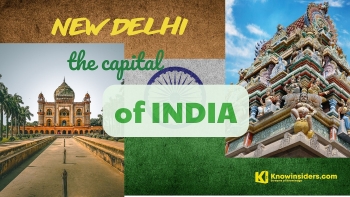 What is The Capital of India: History, Facts, Best Places to See What is The Capital of India: History, Facts, Best Places to See India's capital serves up an astounding cornucopia of history, culture, cuisine, commerce and street life, with countless sights and activities to keep visitors thoroughly engaged. ... |
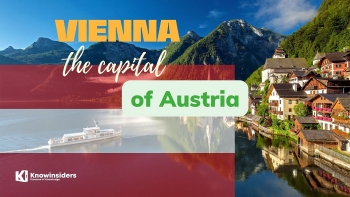 What Is The Capital of Austria: History, Facts, Best Places to See What Is The Capital of Austria: History, Facts, Best Places to See What is the Capital of Austria? A city that inspires with the old and the new alike, and always has a cosy place available in ... |

